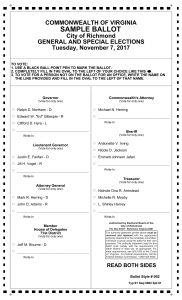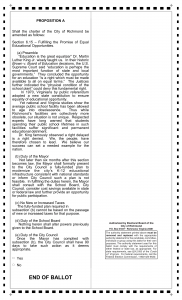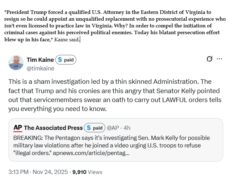By Josh Stanfield of Activate Virginia
Virginia has a uniquely shameful history of oppressing people of color. From slavery to Jim Crow to segregation to Massive Resistance, Virginia and its ruling elite have played prominent and poignant roles spearheading white supremacy in America.
Yet some Virginians are still in denial. This is in part due to state-sponsored propaganda. As Brent Tarter details in Chapter 13, “The Spirit of Virginia,” in The Grandees of Government, Virginia textbooks were intentionally whitewashed. The General Assembly established a commission in the 1950s to draft Virginia history textbooks for students in fourth grade, seventh grade, and high school. The writers (professional historians) discovered, however, that the more sordid aspects of our history would be censored – the disfranchisement of African-Americans under the Constitution of 1902, for example.
These manufactured histories were taught to generations of Virginians, many of whom are still alive. In fact, these histories were taught in some of the same schools that still stand in Richmond.
Those schools – the rundown, rodent-ridden, remnants of the past – are the subject of Proposition A, which the voters of Richmond will consider on their ballots next week.
As long as they remember to flip the ballots over.
The Problem
Proposition A, a product of the Put Schools First movement, deals with school modernization in Richmond. Paul Goldman – who ran Gov. Wilder’s 85/89 campaigns – drafted the language to address what he considers a moral crisis: the decrepit conditions of Richmond schools. He further argues, as does the Richmond Free Press, that we’re over half a century in violation of Brown v. Board of Education II (1955). Brown II concerns the implementation of desegregation and specifically mentions the “physical condition of the school plant” as a factor the courts can consider.
The conditions of Richmond schools are well known within the communities directly affected – but if you’d like to hear more, vis-a-vis Proposition A, take a moment to listen to this report:
“Richmond students, teachers and support staff have reported water leaks and mold; the smell of gas; headaches and allergies. Teachers have shared images of rodents on social media, parents have tried crowdfunding to repair dilapidated bathrooms. While many buildings have problems, George Mason Elementary on Richmond’s East End became the ‘poster school’ for neglected facilities. This summer, community members testified at a special school board meeting held at the school. Teachers said their classrooms flood and ceiling tiles fall to the floor; a basement classroom had spots so hot, crayons melt on the floor; students report itchy eyes and noses as well as headaches.”
In the same report, Goldman explains the ramifications of ignoring school conditions:
“‘Sixty-two years of talk, sixty-two years of children going through schools. The research is clear led by Professor [Glen] Earthman of Virginia Tech, one of the leading authorities on school buildings in the world, that these buildings, if you send the child to run-down buildings it has a permanent negative effect on their ability to learn which they carry through life. It’s just not right,’ said Goldman.”
Getting on the Ballot
The Richmond Crusade for Voters, founded in 1956, grew out of an “interracial group called ‘the Committee to Save Public Schools,’ formed to oppose a January statewide referendum which would allow local government to block integration of public schools.” That referendum passed with low African-American turnout, and members of the Committee determined to focus on educating, registering, and organizing the African-American community. The Richmond Crusade for Voters was thus born.
Over half a century later, in the summer of 2017, a coalition led by the Richmond Crusade for Voters, the Sierra Club, and Goldman, secured over 15,000 signatures (reportedly a record) from Richmond voters to get the referendum on the ballot.
What is Proposition A?
Here’s the language that appears on the ballot:
“Shall the charter of the City of Richmond be amended as follows:
Section 6.15 – Fulfilling the Promise of Equal Educational Opportunities
(a) Preamble
“Education is the great equalizer” Dr. Martin Luther King Jr. wisely taught us. In their historic Brown v Board of Education decisions, the U.S. Supreme Court said “education is perhaps the most important function of state and local governments.” They concluded the opportunity for an education “is a right which must be made available to all on equal terms.” The Justices further indicated the “physical condition of the school plant” could deny this fundamental right.
In 1970, Virginians by public referendum adopted a new state constitution to ensure equality of educational opportunity.
Yet national and Virginia studies show the average public school facility has been allowed to age into obsolescence. Thus while Richmond’s facilities are collectively more obsolete, our situation is not unique. Respected experts have long warned that students spending their public school lifetimes in such facilities suffer significant and permanent educational detriment.
Dr. King famously observed a right delayed is a right denied. We, the people, have therefore chosen to lead. We believe our success can set a needed example for the nation.
(b) Duty of the Mayor
Not later than six months after this section becomes law, the Mayor shall formally present to the City Council a fully-funded plan to modernize the city’s K-12 educational infrastructure consistent with national standards or inform City Council such a plan is not feasible. In fulfilling the duties herein, the Mayor shall consult with the School Board, City Council, consider cost savings available in state or federal law and further provide an opportunity for public participation.
(c) No New or Increased Taxes
The fully-funded plan required in subsection (b) cannot be based on the passage of new or increased taxes for that purpose.
(d) Duty of the School Board
Nothing herein shall alter powers previously given to the School Board.
(e) Duty of the City Council
Once the Mayor has complied with subsection (b), the City Council shall have 90 days to take such action as it deems appropriate.”
What Does Proposition A Do?
Proposition A is largely symbolic, a democratic means to apply pressure on elected officials who many suspect would prefer to kick the can. Yet if Proposition A were to pass, it would signal that the voters of Richmond want school conditions elevated to top priority. If elected officials decided to champion school modernization, their arguments would immediately come with a popular mandate to act immediately.
If Proposition A were to pass, it would be sent to the General Assembly for consideration. The General Assembly is under no obligation to consider it, of course, and they can also amend the language. It’s important to keep in mind that the General Assembly could hypothetically change Richmond’s charter on its own, without any referendum, if it so pleased.
Subsection (b) makes clear that, if Proposition A made it through the General Assembly with language intact, Mayor Stoney would have six months to produce a fully-funded school modernization plan. Or he could simply say that he’s unable to come up with such a plan. That is – he has an out if he needs to take it, though the public would surely demand an explanation. Subsection (b) further notes that Mayor Stoney should consult with the School Board and City Council.
Subsection (c) requires that the modernization plan be funded without raising taxes. Subsection (d) keeps School Board powers intact, and subsection (e) requires City Council to take action within 90 days of Mayor Stoney delivering his plan.
Should Richmond Voters Support Proposition A?
Why vote “Yes” on Proposition A? Supporters might ask: do you want school modernization to be front and center on the agenda? Should we wait longer than half a century? Since the language of the proposed charter amendment simply asks for a plan from the mayor (allowing him the option of stating no plan can be drawn up), proponents of Proposition A frame the vote as a democratic moment in which citizens can object to the degrading conditions of their schools. A moral moment, according to Goldman.
Republican State Senator Glen Sturtevant, who represents part of Richmond in Senate District 10, co-authored an op/ed with Goldman in support of Proposition A. Republican Delegate Manoli Loupassi, who represents part of Richmond in House District 68, also supports Proposition A. Dawn Adams, Loupassi’s Democratic challenger, says she signed the petition to get Proposition A on the ballot and intends to vote “yes.” Adams has suggested, however, that she’d have to see the final language before committing to a vote in the General Assembly. The Richmond Green Party, the Richmond Crusade for Voters, and the Richmond Free Press all support Proposition A.
According to an article in Richmond Magazine, Democratic Delegate Betsy Carr, who represents part of Richmond in House District 69, says she needs to first “see the language” before taking a position. Both her Green Party opponent, Montigue Magruder, and Libertarian Party opponent, Jake Crocker, support Proposition A. Democratic Delegate Lamont Bagby, who represents part of Richmond in House District 74, doesn’t oppose Proposition A – he simply stated, “I’m not sure that it does much.”
Opponents – including elected officials perhaps fearful of tipping off the public that they don’t expect to drastically improve school conditions during their tenures – have run several critiques of Proposition A. Mayor Stoney opposes the proposition as written, and has stated that if it passes, he’ll lobby for the General Assembly to alter the language. Stoney, as you might expect, would prefer to move forward with his Education Compact. Richmond Magazine reported in late August that the Richmond City Council and School Board passed resolutions supporting the Education Compact. The details:
“Billed as a ‘first stage’ and committing both bodies to more meetings, the resolutions found unanimous support at a 20-minute joint meeting of the two governing bodies with Mayor Levar Stoney — the second of its kind this year.
The resolution commits the elected officials to:
- Quarterly meetings of the full council, School Board, the mayor, the Richmond Public Schools superintendent and administrative staff,
- The establishment of an advisory ‘education compact team’ that meets monthly and contains representatives from council, the board, the mayor’s office, RPS leadership, parents, teachers and nonprofit, civic and philanthropic leaders,
- And, a regular meeting between representatives of city agencies whose operations directly affect children and families — known as the ‘children’s cabinet.'”
Progress of a kind.
Some council members have suggested it’s dangerous to present such a charter change to the General Assembly – as legislators could distort the language and make who-knows-what kind of changes to Richmond’s charter. Goldman’s retort? It’s a “scare tactic.” “The General Assembly could do whatever they want now,” Goldman says. “They’re not doing it. Why? Because they’re going to listen to the people who represent Richmond and other places.”
Another objection turns on subsection (c), which requires the school modernization plan not to include new taxes or tax hikes. Given modernization estimates linger around half a billion dollars, funding is obviously a main concern. Yet the language of Proposition A allows the mayor to claim, for example, that no plan can be produced that satisfies subsection (c) – but that an alternative plan exists that does require new or higher taxes. Or a plan could be devised that spans decades and includes alternative funding mechanisms.
Still, Goldman claims that “There’s an amazing amount of duplication [in the city budget], people that don’t need to be there, so many perks and sweetheart contracts and stuff.” Goldman’s opinion shouldn’t be taken lightly; he holds a law degree and a masters in public administration, and he was a senior policy advisor to Mayor Wilder.
There’s also a potential federal solution to part of the funding problem. Senators Warner and Kaine have introduced the School Infrastructure Modernization Act, and Congressman McEachin has co-sponsored (with Congressman Dwight Evans of Pennsylvania) the Rehabilitation of Historic Schools Act of 2017.
According to Senator Kaine’s May press release, “This legislation amends the federal historic rehabilitation tax credit to apply to school buildings that continue to operate as schools. Under current law, the credit applies only for buildings renovated to serve a different function than before. This bill would waive this ‘prior use’ clause for school renovation projects, allowing school districts with aging infrastructure and tight budgets to partner with private entities to finance renovations that the districts otherwise would not be able to afford.”
All of the arguments above are on the record. But is it not reasonable to suspect that some opposition to Proposition A is rooted in opposition to citizens applying democratic pressure to elected officials? The ruling elite of Virginia – yes, including the revered “founding fathers” – have been relatively consistent over time in opposing democratic movements and institutions, to the point of taking explicitly anti-democratic positions. Brent Tarter traces this history in his text, and Jeff Thomas provides a contemporary snapshot in his 2016 work Virginia Politics & Government in a New Century: The Price of Power. Thomas, by the way, donates all book royalties to Richmond Public Schools.
Back of the Ballot
As indicated in the ballot images above, Proposition A will appear on the back of Richmond City ballots. The front of the ballots reminds voters to read both sides, and according to a Facebook post by Goldman, the Virginia Department of Elections has approved signs posted at each voting booth to remind voters to read both sides of the ballot. Even more, sample ballots will be distributed for voters to examine while in line.
Richmond voters will decide for themselves on the merits of Proposition A. It’s of the utmost importance, however, that voters are aware that the proposition exists and requires their input. So if you live in Richmond, please consider Proposition A and tell your fellow Richmond voters to do the same. If you’re not in Richmond, please inform your family, friends, and colleagues who are that there’s a referendum.
And if you find yourself in line, waiting to vote in Richmond, don’t be embarrassed to shout without reservation:
“Check the back of the ballot!”















